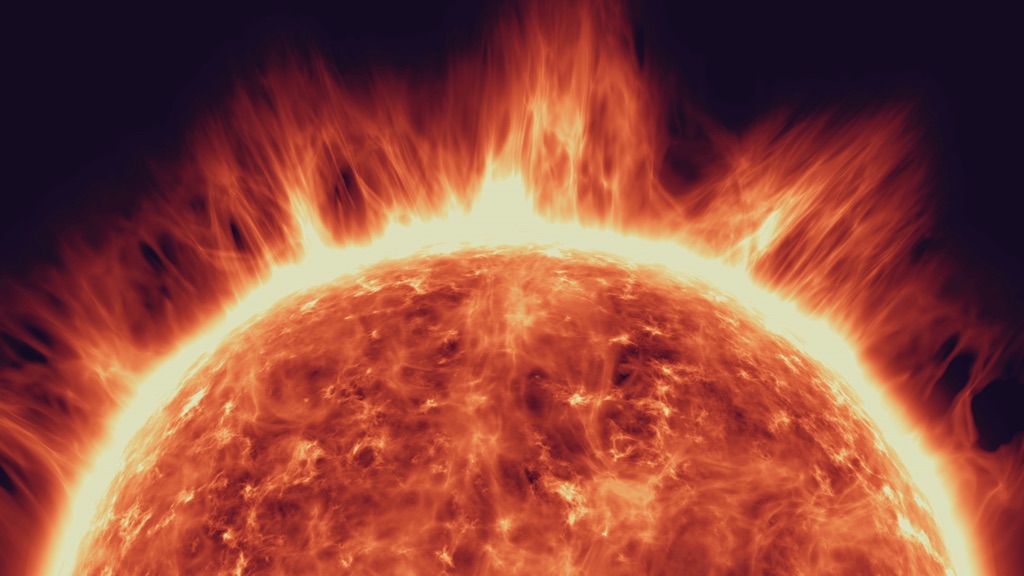The sun, our brilliant life-giving star, is a dynamic and ever-changing entity. One of its fascinating behaviors is the solar cycle, an approximately 11-year period marked by variations in sunspot activity. As Solar Cycle 25 nears its end, let’s delve into what this means and the incredible phenomena it can produce, particularly the breathtaking auroras.
What is a Solar Cycle?
The concept of solar cycles dates back to the mid-1700s when astronomers first noticed a periodic pattern in sunspot activity. These cycles last about 11 years on average, though they can range between 10.7 to 17 years. Each cycle is characterized by a solar minimum and maximum. During the minimum, sunspot activity is low, while the maximum sees a significant increase in sunspots, solar flares, and coronal mass ejections (CMEs).
Solar Cycle 25: A Retrospective
Solar Cycle 25 began around September 2020, following the solar minimum between Cycle 24 and Cycle 25. Initially predicted to mirror the relatively quiet Cycle 24, Cycle 25 has nonetheless provided some spectacular solar events. One such event was a massive CME in May 2020, leading to some of the most vivid auroras in recent memory.
The Impact of Solar Activity on Earth
Solar flares and CMEs can have profound effects on Earth. When these solar emissions are Earth-facing, they can cause geomagnetic storms, leading to dazzling auroras. These storms can also disrupt satellite communications and power grids, as seen in historical events like the Carrington Event of 1859 and the Quebec blackout of 1989.
The Beauty of Auroras
Auroras, or the Northern and Southern Lights, are one of nature’s most spectacular displays. These luminous phenomena occur when charged particles from the sun interact with Earth’s magnetic field and atmosphere. The result is a mesmerizing dance of colors in the night sky, visible predominantly near polar regions but sometimes extending much further due to intense solar activity.
Why Now is the Time to Witness Auroras
As Solar Cycle 25 heads towards its peak in 2025, now is an ideal time to witness auroras. The next few years promise increased solar activity, leading to more frequent and intense auroral displays. However, this period of heightened activity will wane by around 2032, followed by a quieter phase with fewer opportunities to see auroras.
How to Catch an Aurora
To maximize your chances of seeing an aurora, consider using apps like Aurora Pro, which provide real-time alerts and forecasts of auroral activity. Travel to dark, rural areas away from city lights to get the best view. While auroras are more common in winter due to longer nights and clearer skies, significant solar events can create opportunities for sightings even in summer.
Conclusion
Solar Cycle 25 has been a period of remarkable solar activity, offering unique opportunities to witness one of nature’s greatest spectacles. With the cycle nearing its peak, now is the perfect time to plan your aurora-viewing adventure. Whether you’re a seasoned sky-watcher or a curious novice, the next few years are your chance to experience the magic of the auroras.
Remember, our understanding of the sun and its cycles continues to grow, thanks to advances in technology and observation. As we learn more, we can better predict and appreciate these awe-inspiring solar phenomena. So, gear up, find a dark spot, and prepare to be dazzled by the ethereal beauty of the auroras.
Cannibal CME https://svs.gsfc.nasa.gov/20067
Cycle 25 – https://blogs.nasa.gov/solarcycle25/
Space Weather NOOA https://www.swpc.noaa.gov/
Aurora Pro https://apps.apple.com/us/app/my-aurora-forecast-alerts/id1073082439
My Aurora Forecast https://play.google.com/store/apps/details?id=com.jrustonapps.myauroraforecast&hl=en_US&gl=US

